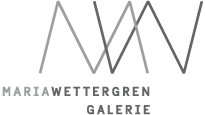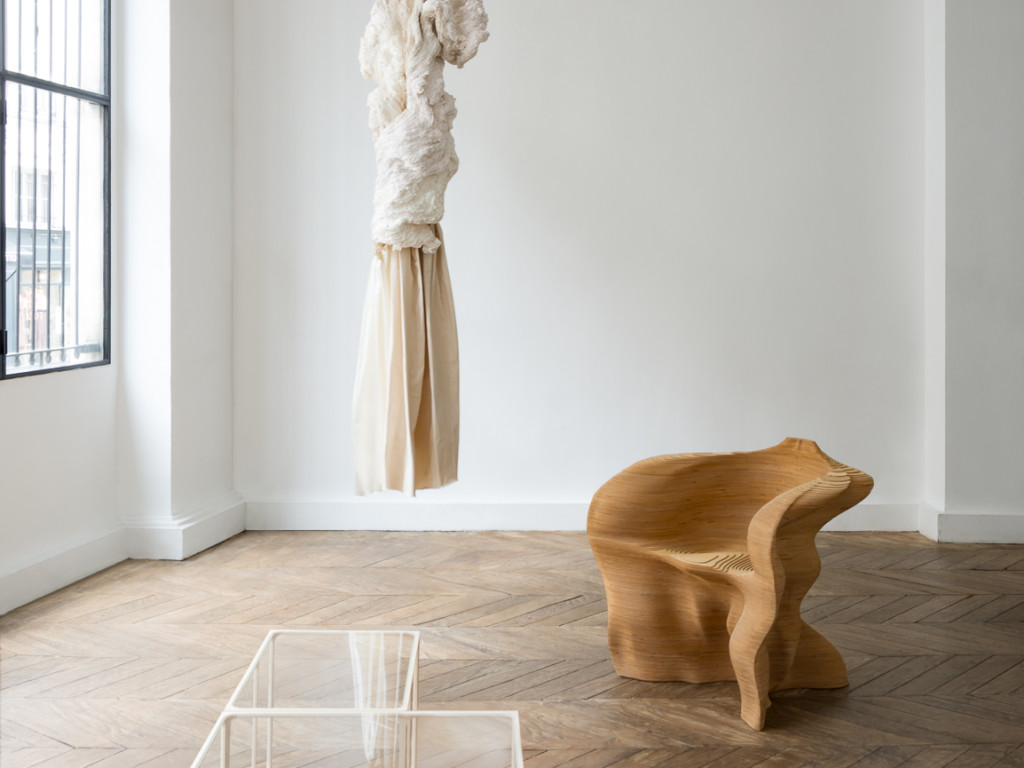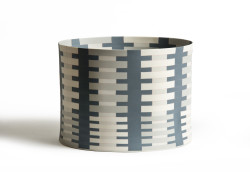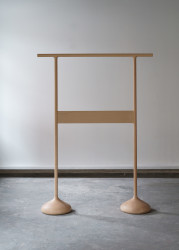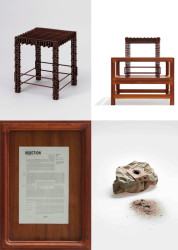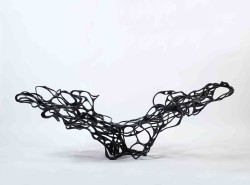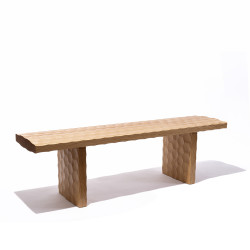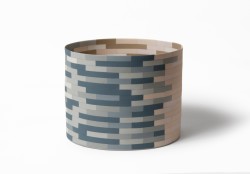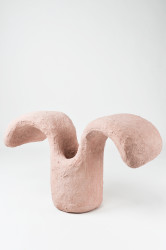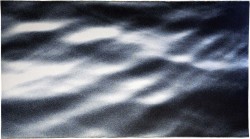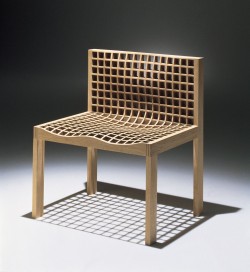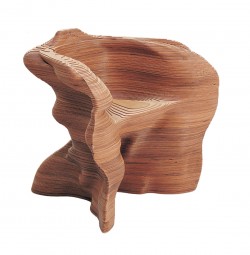
The 10th September, 2020, marks the opening of Galerie Maria Wettergren’s new gallery space in Paris, located at 121 Rue Vieille-du-Temple in the Marais. The inaugural exhibition, Nouvelle Vague, presents a selection of Scandinavian milestone works that have contributed to redefining the international art & design scene over the past twenty years, with works that combine high technology and craftsmanship in the fields of textile art, sculpture, furniture and lighting. The interdisciplinary research into possible expressions related to various materials and techniques seems to echo the Bauhaus school and the thinking of Walter Gropius: Architects, painters, sculptors, we must all return to crafts! For there is no such thing as “professional art”.
The title of the exhibition, Nouvelle Vague (New Wave), is both a reference to the experimental avant-garde dimension of this Scandinavian art & design movement, and a nod to its organic inspirations. Mathias Bengtsson’s iconic Slice Chair (1999) in laser-cut and hand-glued maple wood, as well as his Growth Chaise Longue (2017) in solid bronze, conceived from a digital “seed”, are both striking examples of what is possible when a fascination with the organic form meets digital technologies and exquisite craftsmanship. The 3D-printed light sculpture Porcupine (2006/2015) designed by Ilkka Suppanen, is a similar example of a pioneering technical approach to sculptural design with roots in nature.
The exhibition pays particular attention to pioneering women artists in the field of textile art. The blend of high technology, craftsmanship and organic sensibility was introduced to the Danish art scene by textile artists Astrid Krogh and Grethe Sørensen, in the beginning of 2000. Krogh’s light sculpture Ikat (2011), hand-woven in fiber optics, interprets the ikat tradition of using light as an imaginary dye, creating its own patterns that slowly change at an organic pace, whereas Sørensen’s wall tapestry Water Mirror / Jels II (2014) with its undulating wave pattern, is digitally conceived, thanks to Sørensen’s discovery of the possibility of translating pixels into threads on a jacquard loom.
On another aesthetic register, subtly situated between the corporal and the vegetal, Column (2019), a densely draped textile sculpture by the Norwegian artist Hanne Friis, appears like a floating piece of organic architecture, or a tree trunk, striving upwards in a spiral movement. The fiber artist Gjertrud Hals, on the other hand, is working with her characteristic web aesthetic in Midnight Blue (2018), a hand-dyed indigo thread sculpture, incorporating various techniques such as crocheting, knitting, lacework and macramé.
This Penelopian dimension is equally present in Cecilie Bendixen’s kinetic thread sculpture, Moon Disc Adular (2019). By spinning a polyester thread on a circular wooden frame, Bendixen poetically works with the infinite geometric possibilities of intersecting threads, while exploring the dialogue between sound-absorption and form. Ditte Hammerstrøm, another important protagonist of the contemporary Danish art & design scene, is equally part of the exhibition with her sculptural textile daybeds, Loungescape (2005) and Low Mohair (2015). The textile dimension continues in Lotte Westphael’s delicate porcelain sculptures Multicolored Syncopes (2019/2020), built up from thin strips of colored porcelain, inspired by Anni Albers’ textile art.
The sculptural wooden objects, on the edge of design, with or without a function, by Rasmus Fenhann, Line Depping, Jakob Jørgensen, Akiko Kuwahata, Boris Berlin, Mikko Paakkanen and Eske Rex, represent another important tendency of the contemporary Scandinavian art & design scene characterized by a tactile, soulful experimentation with wood and its dynamics.
This phenomenological approach to a specific material and technique is equally essential to Tora Urup in her painstakingly precise, optical glass sculptures, and to Carl Emil Jacobsen’s dense and enigmatic Powder Variations, made from crushed stone pigments and concrete. The exhibition also shows the intriguing work Completely Dusty (2017) by the artist duo Benandsebastian, made of walnut, leather, wax and dust from Thorvalden’s Museum in Copenhagen. While dust slowly unsettles the piece’s obsessive order, attempting to thoroughly clean the piece would most likely lead to the work’s collapse. Quoting the artists… : The piece both accommodates and defends the dust that we try to eliminate from our lives through clean lines and frictionless surfaces.
- Nouvelle Vague. Scandinavian Art & Design 1999-2020
- Read more
The 10th September, 2020, marks the opening of Galerie Maria Wettergren’s new gallery space in Paris, located at 121 Rue Vieille-du-Temple in the Marais. The inaugural exhibition, Nouvelle Vague, presents a selection of Scandinavian milestone works that have contributed to redefining the international art & design scene over the past twenty years, with works that […]
